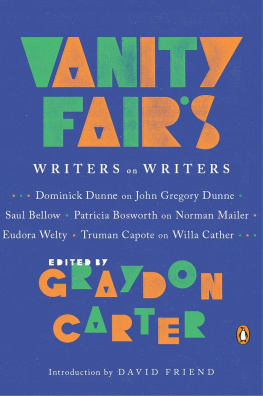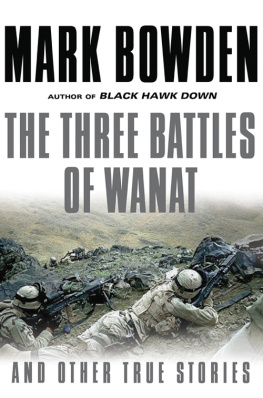coincident with Main Street.
T here had been plenty of danger signsthere always are. Some lonely prophets, dismissed as Jeremiahs, had been pointing out for years that housing prices were preposterously inflated and inevitably unsustainable, and that America was again spiraling into bubble territory. Others had cast worried glances at a raft of new and risky Wall Street offeringsthe securitized mortgage, the credit-default swap, the collateralized debt obligation. Their swift proliferation around the globe meant that trouble anywhere would spell trouble everywhere. Still others had pointed to a lack of regulation in the financial system. Existing rules had been evisceratedthe free market would regulate itself!and no one had come up with new rules to govern the exotic new ways of doing business.
So there had been dark portents. But nothing prepared America or the world for the financial crisis that gathered momentum in the spring of 2008symbolized by the sudden collapse of Bear Stearnsand that within a year saw the stock market plunge by 30 percent, home foreclosures rise to more than two million annually, and America and the entire global economy thrown into a tailspin from which it has yet to recover. Economists and commentators nervously dusted off the word depression, which for decades had been the province of psychiatry and pharmacology. Alan Greenspan, former chairman of the Federal Reserve Board and one of the pivotal contributors to the crisis, appeared before Congress and, with a lugubrious sheepishness that some interpreted as humility, admitted that there had been a flaw in his free-market worldview.
A character in Woody Allens Crimes and Misdemeanors observes that comedy is tragedy, plus time. The notion already feels antique. In a world of 24-7 news crawls and millions of frenetic bloggers, comedy and tragedy are now intermingled from the start. The human consequences of the financial crisisthe loss of homes and jobs, the disappearance of savings and pensions, the evaporation of trust in business and government, the disruption of countless livesare beyond calculus. The elements of farce are no less real, as the machinations of Wall Street upend governments and turn the glitter of Greenwich and Southampton into dross.
This collection of articles from Vanity Fair is an attempt to capture the pitch and moment of the whole mess. Monthly-magazine journalism occupies a strategic middle ground between the headlong rush of headlines and the distant rumble of weighty scholarship. It can tell full, coherent stories in a way no newspaper can (and no expert will). It can also capture the immediacy of events while providing background context and considered judgment: history in the roundand on the fly.
T he economic crisisthe Great Hangoveris the most important global story of recent times, and over the course of two years Vanity Fair has devoted an immense amount of reporting energy (and hundreds of pages) to covering it. It may be the most sustained journalistic endeavor in the magazines historyand even the business press has taken note. As the Reuters financial blogger Felix Salmon recently observed, V.F. has, improbably, become the home of the best financial journalism in the world of magazines.
Improbable, maybeif you ignore the team of contributors that V.F. editor Graydon Carter has assigned to the task. It includes some of the most highly regarded writers about money and business in the countrypeople such as Michael Lewis, Bethany McLean, and Bryan Burrough. It includes renowned scholars, such as the historian Niall Ferguson and the Nobel-laureate economist Joseph E. Stiglitz. It includes veteran political reporters (such as Todd S. Purdum), investigative sleuths (Donald L. Barlett and James B. Steele), some V.F. newcomers (such as Mark Bowden), and a cadre of longtime regulars (Bruce Feirstein, David Margolick, Nina Munk, Mark Seal, Michael Shnayerson, and Vicky Ward).
T he curtain rises in the spring of 2008. Gloom and anxiety grip Wall Street, brought on by the collapse of the subprime-mortgage market and the onset of a credit crisis. On an otherwise unremarkable Monday morning in March a rumor begins to escalate on trading floors about a liquidity problem at a major investment bank. It is, writes Bryan Burrough in his day-by-day (sometimes minute-by-minute) account of the sudden disintegration of Bear Stearns, the first tiny ripple in what within hours would grow into a tidal wave of rumor and speculation that within a week will bring down the firm.
More implosions followfirst the mortgage financiers Fannie Mae and Freddie Mac on September 7, then Lehman Brothers and the insurance giant A.I.G. a week later. The action shifts to Washington, where the Treasury and the Federal Reserve (President Bush plays little apparent role) scramble to stave off a meltdown, eventually provoking Congress to pass a $700 billion bank-bailout bill. Don Barlett and Jim Steele describe the scene in October when Treasury secretary Henry Paulson hands a single sheet of paper to each of the big nine bankers and tells them to sign their names and fill in the blank to indicate how many billions they want. That is all it takes to start shoveling money out the door.
The crisis seeps everywherevertically, to the entire domestic economy, and horizontally, around the planet. Iceland, an economic mite, tries to leverage itself into a muscle-flexing behemoth. Michael Lewiss case study of the countrys collapsecash-strapped Icelanders begin torching their Range Rovers for insurance moneyis a tale that blends equal measures of hubris and opra bouffe. Theres plenty of both to go around, surely. The plunge in the stock market drags down even the mightiest endowmentssuch as that of Harvard University, whose reversal of fortune is chronicled by Nina Munk. Say what you will about Harvard, but its administrators dont have to look up the word Schadenfreude.
And then there is the Bernard Madoff scandal. It provides a narrative skein that epitomizes every aspect of the economic crisis: the sleepy regulators, the lubricious greed, and the mingled arrogance, idiocy, and criminality. Madoff remains in character all the way to the end, holding his annual holiday dinner for employees the night before admitting to F.B.I. agents that his business is one big lie. Vanity Fair s Mark Seal has the inside track from the start on Bernie Madoff and his manipulations, and Seals stunning trifecta of articles serves as a self-contained play within a playpart Shakespeare, part Stoppard, part Miller.
T he Great Hangover is the worst morning after weve endured in 70 years. We can be sure it wont be the last. In his now classic study, Manias, Panics, and Crashes, the economic historian Charles Kindleberger quotes a 19th-century British banker who described the economic history of mankind as an unhappy cycle: quiescence, improvement, confidence, prosperity, excitement, overtrading, CONVULSION, pressure, stagnation, ending again in quiescence. As Kindleberger and others have observed, if one looks back over the long history of financial implosionsfrom the 17th-century Tulip Bubble to the 18th-century South Sea Bubble to the Crash of 1929three constants stand out.
The first is the belief that good times will last forever and that speculative exuberance will never come to an end. Henry Paulson put it this way to V.F. s Todd S. Purdum: The investors all assume that prices will keep going up, and so they do things that dont seem foolish at the time, but in retrospect seem utterly ridiculous. (The problem with retrospect is that it never seems to arrive in time.) The second constant is fraud. Like a rapidly ebbing tide, the crisis swamps some vessels and strands othersand exposes rotting hulks to the light of day. The third constant is the onset of remorse: the public wailing, the donning of sackcloth, the fervent resolve to go and sin no moresomething akin to that morning-after remorse following a night on the town.








